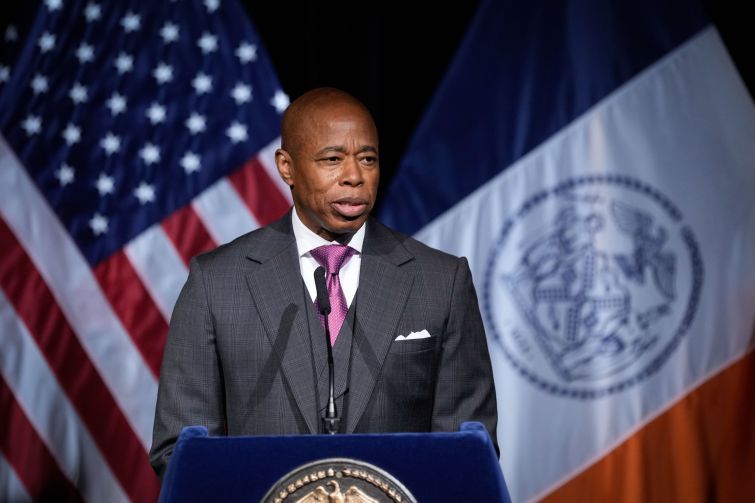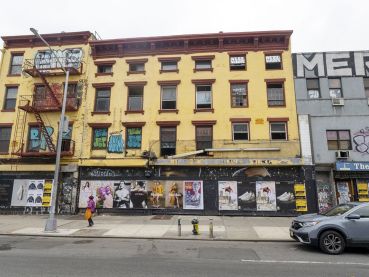Mayor Adams Proposes Dramatic Zoning Changes to Boost Housing Construction
By Rebecca Baird-Remba September 21, 2023 3:20 pm
reprints
New York City Mayor Eric Adams unveiled a dramatic slate of residential zoning changes Thursday designed to allow slightly more housing in many neighborhoods citywide in an effort to build 100,000 homes over the next 10 years.
The proposals include eliminating parking mandates for new housing, allowing developers to opt in to zoning bonuses if at least 20 percent of their units are affordable, making office-to-residential conversions easier and more widespread, legalizing accessory dwelling units, and allowing three- to five-story buildings in lower-density parts of the city near subways.
The new zoning would also allow single-room occupancy (SRO) buildings for the first time in 50 years, allowing smaller units and shared kitchens and bathrooms. And it will permit two to four stories of residential development in areas with commercial overlays, which often have rows of single-story retail buildings.
Adams argued that this is the biggest slate of residential zoning changes since New York City’s zoning code was passed in 1961, which he said promoted “segregation” and “limited growth rather than encouraging it, ultimately leading to a massive housing shortage, one we are still reckoning with 62 years later.”
He also pointed out that the city had added 800,000 new jobs but only 200,000 new homes over the past decade.
“Half of all New Yorkers today are rent burdened,” he said. “What we’re proposing will benefit every neighborhood and every New Yorker. This is what the ‘City of Yes’ looks like — yes to more density, more flexibility and sustainability.”
Another major change is allowing large campuses — including Mitchell-Lama middle-income housing complexes and churches with large parking lots or vacant lots — to build new housing even if their existing buildings do not comply with current zoning. Under the current rules, if an existing building on a campus is too large for current zoning, new buildings are not allowed.
Office-to-residential conversions would be allowed citywide, rather than in a narrow slice of Lower Manhattan and Midtown, and in buildings constructed through 1990. Currently, developers can only convert 1970s and 1980s buildings in the Financial District and parts of Lower Manhattan. In the rest of the city, only pre-1961 office towers can be converted.
The changes would also provide zoning relief for homeowners who want to add accessory dwelling units of up to 800 square feet on their property, either in the backyard or basement, and allow them to do so without adding more parking.
In addition, landmarked properties would have an easier time selling their development rights to raise revenue. Currently, landmarked properties can transfer their air rights only within specific districts (such as Midtown East) or to properties on the same block.
“Our housing crisis is severe, and this landmark proposal meets the moment with the most sweeping pro-housing changes in the history of our zoning code,” said Deputy Mayor Maria Torres-Springer. “At its root, this plan is driven by a simple insight: To solve our housing shortage, we need to build more homes. Building is essential to our future as a city where working families can live and thrive and to our status as an economic and cultural capital.”
The proposals will enter scoping and environmental review this fall, with initial rounds of public meetings scheduled through the fall and winter. The City Planning Commission is expected to kick off public review in the spring, with a final New York City Council vote potentially in the cards by next fall.
Rebecca Baird-Remba can be reached at rbairdremba@commercialobserver.com.


